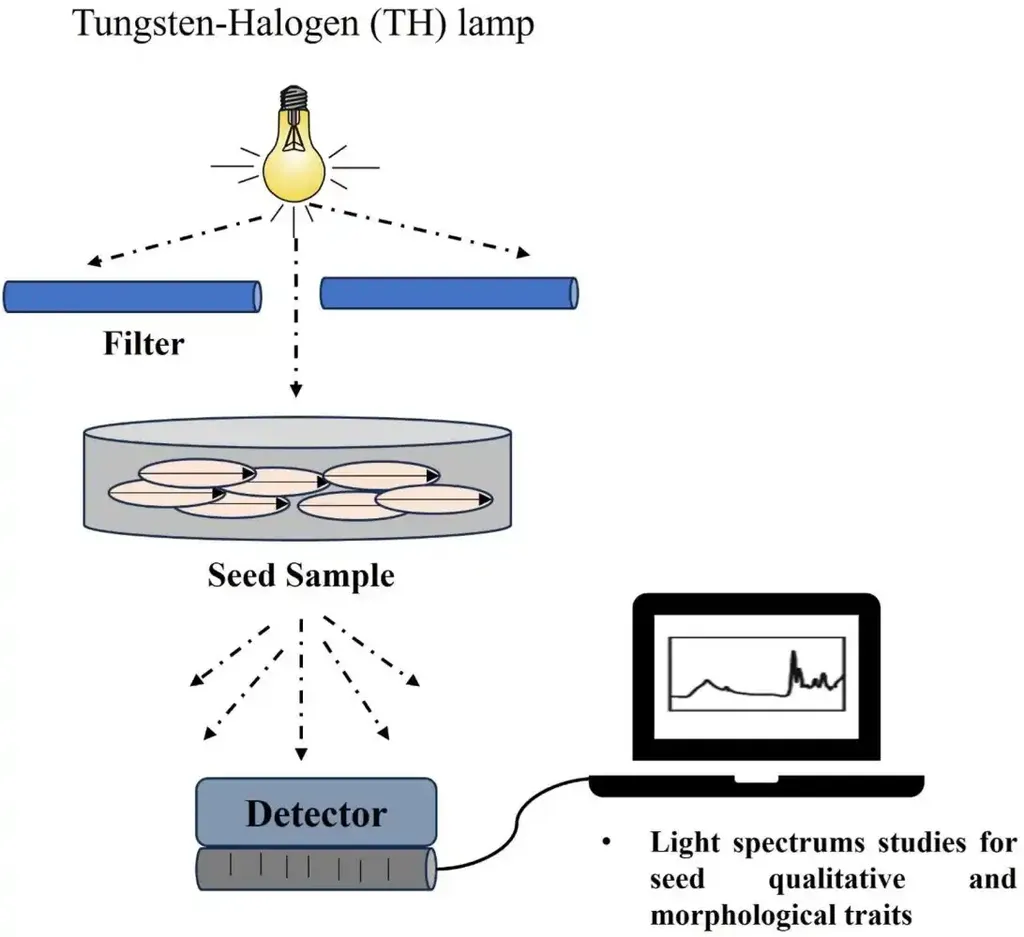In the heart of New Delhi, a groundbreaking study led by Monika Singh at the ICAR-Indian Agricultural Research Institute is revolutionizing the way we assess seed viability. By harnessing the power of near-infrared (NIR) spectroscopy and machine learning (ML), Singh and her team have developed a non-destructive, efficient method for identifying viable seeds, a critical factor in agriculture, biodiversity conservation, and ecological research.
Traditional methods of seed viability testing have long posed challenges, being labour-intensive and often destructive. “The conventional methods not only waste seeds but also consume considerable time and effort,” Singh explains. “Our approach aims to address these issues by integrating advanced technologies that offer a more sustainable and scalable solution.”
The study, published in *The Indian Journal of Agricultural Sciences* (translated from Hindi as *Indian Journal of Agricultural Sciences*), utilized a diverse dataset of NIR spectral data from various seed species. The team employed three sophisticated machine learning models: Linear Discriminant Analysis (LDA), Random Forest (RF), and Artificial Neural Networks (ANN). The results were impressive, with the ANN model achieving an accuracy of approximately 95% in classifying viable seeds.
“This high accuracy is a testament to the potential of machine learning in capturing intricate patterns within spectral data,” Singh notes. “It’s a significant step forward in precision agriculture and conservation efforts.”
The integration of machine learning techniques into seed viability assessment offers numerous commercial impacts, particularly in the energy sector. Efficient seed selection can lead to improved crop yields, which in turn supports the bioenergy industry by ensuring a steady supply of biomass. “By conserving valuable seed resources and enabling continuous monitoring, our method can contribute to sustainable agricultural practices and support the growing demand for renewable energy,” Singh adds.
Moreover, the use of Local Interpretable Model-Agnostic Explanations (LIME) enhances model transparency by providing deeper insights into the decision-making process of the ANN. This not only improves the reliability of the results but also fosters trust in the technology among stakeholders.
The implications of this research extend beyond immediate applications. As the world grapples with climate change and the need for sustainable practices, the ability to efficiently and accurately assess seed viability becomes increasingly important. “Our study paves the way for future developments in agricultural technology, offering scalable solutions that can be adapted for large-scale applications,” Singh concludes.
In an era where technology and agriculture intersect, Singh’s work stands as a beacon of innovation, promising to shape the future of sustainable conservation and precision agriculture. As the world looks towards a greener future, the integration of NIR spectroscopy and machine learning techniques offers a glimpse into the potential of advanced technologies in addressing global challenges.

